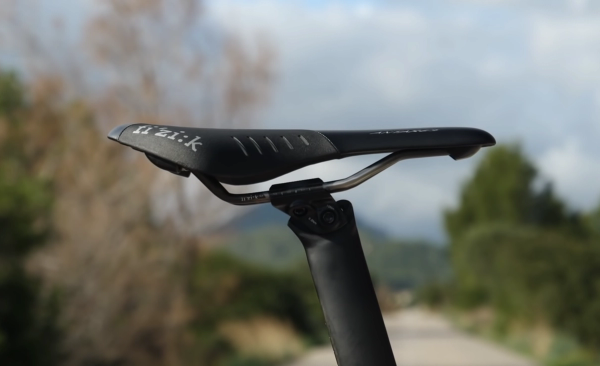Top five tips to get comfortable on your saddle
With these tips, you can ride comfortably all day long.
James Howell-Jones
Junior Writer
Saddle sores. They can ruin your day, your ride, and, well, your nether regions. It’s a common issue, but fortunately, it’s fairly easy to resolve. Here are our top tips to help prevent any uncomfortable sores.

Find the right saddle
The saddle is one of the three main contact points that connects you to your bike, the other two being your bars and your pedals. Out of those three, the saddle takes the majority of your body weight, so it’s really important that you get one that fits you properly.
To get comfy on the saddle, you need your weight to be resting on your sit bones, rather than any soft tissue. The right saddle, then, is the saddle that’s the right width for your sit bones. Too wide and it might interfere with your thighs. Too narrow, and your weight will end up on parts it shouldn’t be.
The best way to do this is to head along to a bike shop where you can test a few saddles and find the right one for you. Some shops will measure the distance between your sit bones using special pads, but there’s no substitute for testing a saddle while cycling. For more advice about finding the right saddle for you, head to our guide.

Get some decent cycling shorts
Another essential item necessary to avoid saddle sores is a good pair of cycling shorts [link]. The best shorts to go for will have a nice snug fit. It might seem a bit odd at first, but close-fitting shorts means there are no folds or creases to cause chafe or discomfort. Ideally, you will want to find something that is going to keep your padded chamois in place while riding and feel comfortable to wear.
The chamois is designed to be close to your skin, so go commando! Again, this may seem like a strange suggestion to the uninitiated, but get rid of your underwear if you want to avoid saddle sores. You’ll also free yourself of the dreaded visible panty line (commonly known as VPL). Finding a chamois that fits is absolutely imperative. The best way to find the one that’s right for you is to try on a load of different shorts, to see what works for you. Probably best to keep your underwear on while you try them on though…

Try chamois cream
Saddle sores can occur from pressure in the wrong areas or from the wrong saddle, but they can also be caused by chafing. You can avoid this by using chamois cream, which helps to prevent the build-up of friction and can be applied to the chamois itself or directly onto your skin.
Originally, chamois cream was designed to soften up the chamois of old-fashioned riding shorts. These days, it’s essentially an anti-bacterial cream that reduces friction between you and your shorts.

Ride out of the saddle
It may sound obvious, but it's worth mentioning. The best thing to do if you've been in the saddle for a while is to select a bigger gear and stand up out of the saddle for a few seconds. This will relieve some of the pressure from your backside and will hopefully give your bum the rest it needs before you can sit back in the saddle and carry on riding.

Adjust your saddle height and tilt
Another way that you can prevent yourself from getting sore is getting the right saddle height. If the saddle’s too high, your pelvis will rotate on the saddle and you'll find it really uncomfortable, giving you a sore undercarriage. You’re looking for the perfect saddle height, meaning that your pelvis is level and your weight is distributed through your pedals, saddle and handlebars.
Have a think about the angle at which your saddle is tilted. For most of us, a level saddle is comfortable. But some prefer nose up, and others prefer nose down. The best way to alter your saddle tilt is to fix your bike to an indoor trainer, where it's in a stationary position and you can ride it as you would on the road in a comfortable position. This will allow you to play around with your saddle tilt and find the position that’s right for you, because after all, it’s a matter of personal preference.
.jpg?rect=957,780,3097,3060&w=600&auto=format)
.png?w=600&auto=format)









